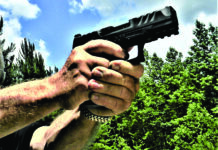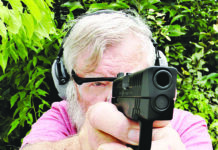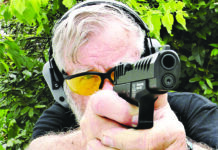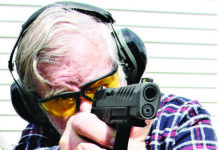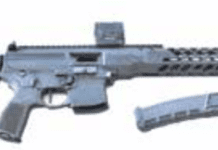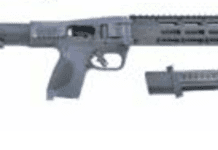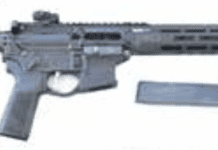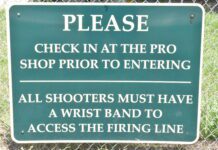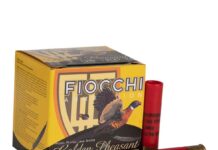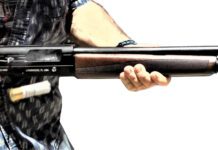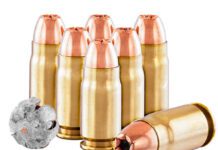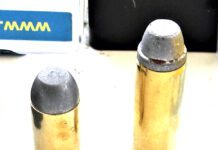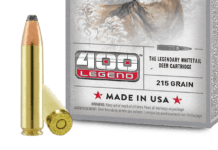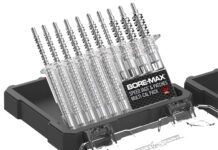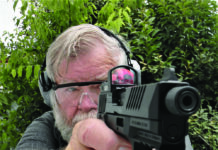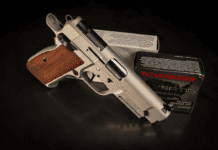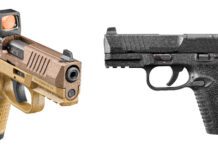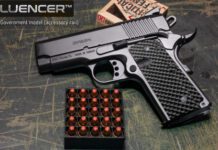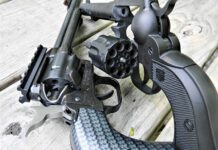Issues of Concealment: Printing & Flashing
New Videos Added to Gunreports.Com This Week
What’s New In Peeps?
Inside-The-Waistband Holsters: Kydex, Leather, & Hybrid Styles
Inside-The-Waistband Holsters: Kydex, Leather, & Hybrid Styles
Personal-Defense Handgun Pick: 9mm Luger or 357 Magnum?
It is true some prefer the revolver and some prefer the automatic regardless of cartridge, but sometimes the handgun is chosen on the basis of its chambering. The 357 Magnum revolver is often chosen over the 9mm pistol for the former's terminal ballistics. Shooters might honestly prefer a self-loader, but they are hedging their bets and obtaining a cartridge with a proven defense record. They realize the 357 Magnum handgun is limited in capacity from five to eight rounds, and the eight-shooters are pretty big guns. In reality, most personal-defense Magnums are five- or six-shooters. The flash, blast, and recoil of the Magnum and its smaller reserve of ammunition at the ready are deemed justifiable trade-offs for more power.
In contrast, the 9mm is available in a myriad of pistol choices, and some revolvers. There are 357 Magnum self-loaders as well, but they are pretty heavy propositions. For defensive use, most carriers choose the 9mm for its low recoil, good control, and adequate downrange ballistics. Some like the idea of firing a group on the target that is well centered, while others feel that a single heavy hit in the X ring is the way to go.
It should be noted that the 357 Magnum is among a very few "small-bore" revolvers that has earned a good reputation for performance even with non-expanding bullets. The 160-grain SWC at 1300 fps or so, used by professional lawmen from 1935 on, was deemed a good choice for police work for a reason. With the heaviest loads, the Magnum certainly lives up to its reputation for excellent penetration. As a caliber for defense against animals or against light cover, the Magnum has no peer. The 9mm, however, has relied upon reasonably good ballistics and fast repeat shots to do the business. Each has its adherents. However, the situation has changed to an extent, as far as the performance of each cartridge.
It's true that 9mm ballistics have been improved considerably, with some loads operating at +P and +P+ pressures and topped with great bullets. At the same time, the 357 Magnum is no longer a proposition only for heavy revolvers; relatively light five-shot revolvers with short barrels are widely available, so some versions of the Magnum cartridge have been loaded down for personal defense.
So, if we compare the handguns that are purpose-designed for defense use, does the Magnum really have that great an advantage? That was the question we wanted to answer. To make the comparison fair, the pistols would have to have similar barrel lengths and be geared toward personal defense. We were not concerned with penetration against animals; we have done that with the 357 Magnum and found that the full-power Magnum as loaded by Cor-Bon and a few others is a credible and effective loading for this purpose. Rather, we were interested in comparing the ballistics of loads intended for personal defense.
Production Ends on Arsenals SLR-106 Rifles; Kahr Moving
After nearly a decade since its initial introduction into the firearms marketplace, production on Arsenal's SLR-106 series has officially ended. The SLR-106 rifle and pistol series was Arsenal's answer to the 5.56 caliber as the company looked to compete in that arena. The major selling point of the line was its chrome-lined and hammer-forged barrel. The current stock of SLR-106 5.56 caliber rifles and pistols will continue to be sold until supply runs out. Arsenal's availability list is displayed in the nearby photo. Additional SLR-106 products can be found by checking with Arsenal's distributors and various dealers.


